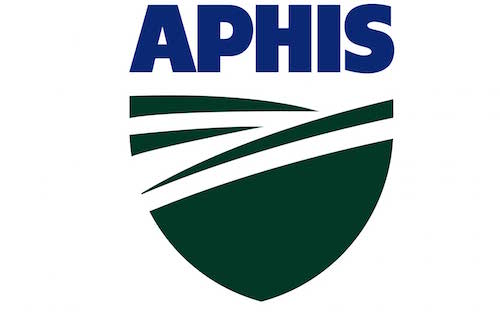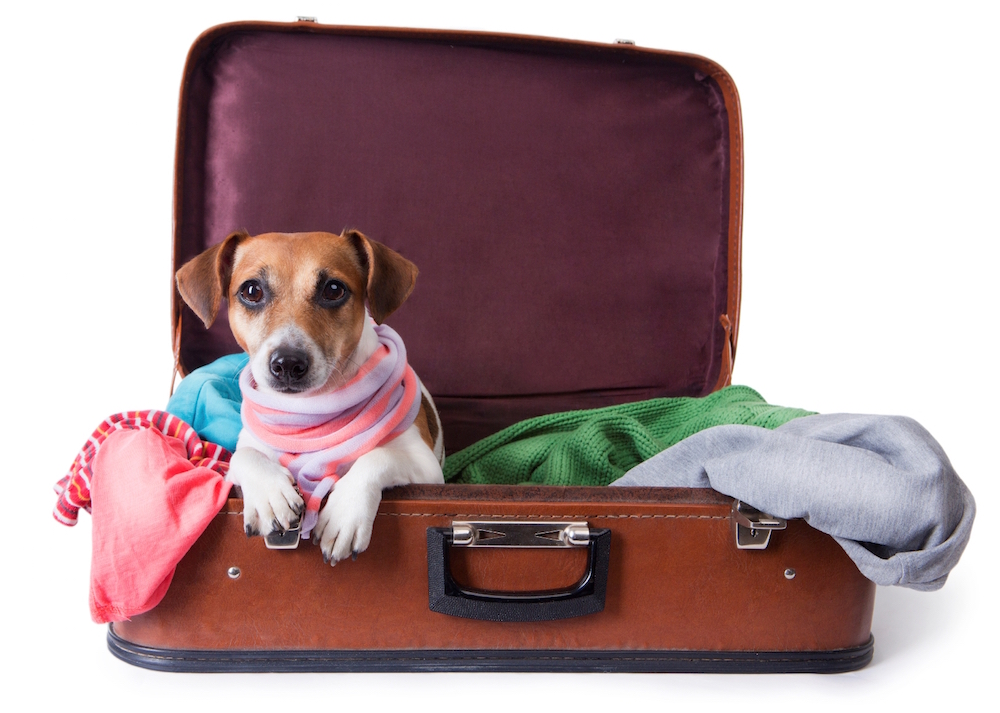(Editor’s note: Beth Hoke just created the Traveling With Pets Facebook Messenger bot. You can ask the virtual Beth questions about regulations in Europe.)
If you’ve ever tried to take any form of public transportation with your pet, you know what a pain it can be.
 In November, when I first left the United States for a long-term adventure in Europe, I had no idea what I was getting myself into.
In November, when I first left the United States for a long-term adventure in Europe, I had no idea what I was getting myself into.
Although I started by looking for flights, I was momentarily distracted when I came across information about the Cunard Line allowing V.I.P.s (Very Important Pooches) to be kenneled on transatlantic cruises.
Despite a fantastically low fare for humans (only $549 at the time), the minimum price to board a dog on the luxury liner was $800.
So, back to the airlines.
Hesitant to put my furry friend in the belly of an airplane, I narrowed my search to airlines that would allow me to keep her in the cabin with me.
This automatically eliminated any flights that landed in the United Kingdom as pets are only allowed in the cargo hold due to government regulations regarding their transport.
Because the United Kingdom is a rabies-free country, they’re really strict about inspecting pets that cross their borders. Plus, there’s the (albeit small) chance that your pet will be returned to the United States or quarantined if the person inspecting your paperwork isn’t satisfied with what they see.
Pass.
My search yielded several flights from Chicago to Funchal, Madeira with layovers in Boston and Ponta Delgada that didn’t charge me more to carry the dog on board than the price of my own ticket. As Ponta Delgada is one of the cities that is an approved point of entry into the European Union for pets, I chose one that left Boston late at night so the dog and I could both sleep on the flight.
So far, so good.
Being a logical person, I next visited the European Commission’s website.
The EC is the governmental body of the European Union and, therefore, the final word on the legislation governing the transport of pets and other animals into member countries.
I found a link on the website to the “Model animal health certificate for the non-commercial movement into a Member State from a territory or third country of dogs, cats or ferrets” that I would need to document that my pet was microchipped and vaccinated against rabies within the 10 days preceding our flight.
The paperwork needed to be issued by an official veterinarian, endorsed by the “competent authority,” and accompanied by a written declaration from me that I wasn’t planning on transporting any animals for commercial purposes.
Next, I called and made an appointment with the vet to get the paperwork filled out and signed.
Word of advice No. 1: make the appointment for the earliest possible date in that 10-day window. Trust me.
When I arrived at the vet’s office, they were pretty clueless about the paperwork. Surely I was not the only person who had ever flown to Europe with my pet from the Chicago suburbs, right? Right?
The vet had to attest to the fact that the dog was in good health, so the first step was a general examination. At the end of the exam, her microchip was scanned, and I was informed that she would need to have a new microchip put in as the European standard is 15 digits and the U.S. standard is, of course, not.
Then, despite the fact that she had recently been vaccinated for rabies, she needed to be re-vaccinated because the rabies vaccination had to occur after the new microchip was implanted.
 The vet told me that the “competent authority” that needed to endorse the paperwork was the United States Department of Agriculture’s Animal and Plant Health Inspection Service.
The vet told me that the “competent authority” that needed to endorse the paperwork was the United States Department of Agriculture’s Animal and Plant Health Inspection Service.
Good thing he knew, because I hadn’t been able to figure that one out from the European Commission’s website, nor was it listed on the paperwork.
Helpful, right?
Once I had the completed paperwork in hand, I called the state APHIS office, who referred me to the local office, which is open on weekdays from 6:45 a.m. to 3:30 p.m.
Not great hours if you have a 9 to 5 job, but luckily I worked from 12 to 9 at the time, so I made the 45-minute trek to the office to get the official endorsement before work.
When I arrived, I was informed that the paperwork I brought with me was not the correct paperwork, despite the fact that I had downloaded it directly from the EC website.
They also asked me for my vet’s name to verify that he was accredited since they insisted that he would have known that the paperwork was not correct if he had been through their accreditation program.
Word of advice No. 2: Be sure to ask your vet if they are accredited or your paperwork will be rejected by the department.
I couldn’t get back to the vet that day without being late to work, so I made an appointment for the following day. With the correct paperwork now in hand, I went to the vet’s office and insisted that they call APHIS and fill out the forms while they were on the phone with them since they had been so confused during my previous visit.
Not able to get back to the APHIS office without missing part of my work day, I wasn’t able to return until the following Monday. I drove all the way down there in rush hour traffic only to find the office was closed because it was Veteran’s Day.
Remember the first bit of advice I gave you?
Back to work, back home, back down to the local office the next day. I know, I know. It sounds like I’m whining, but if you’ve ever tried driving in rush hour traffic in Chicagoland, you’d be at least a little sympathetic — I know you would.
With only three days left before our flight, I got the official stamp from APHIS on the correct paperwork and we were ready to go.
One final bit of business that needed to be taken care of was the purchase of a waterproof, chew-proof, airline-approved, enclosed pet carrier with dimensions that vary depending on the airline.
Word of advice No. 3: Be sure to check the airline’s pet policies for the exact specifications before you go shopping.
The good news is that my dog was perfectly well-behaved during both legs of the flight. Once we arrived in Portugal, she was whisked away by a vet who checked her health and reviewed her documentation and then handed back to me by the time my luggage came off the carousel.
Traveling with the dog within Europe has been without incident. When I book my flights and indicate that a dog will be accompanying me, I am asked to go to the ticket counter when I arrive at the airport, where they check the paperwork, glance at the carrier, and wave me on my way.
Ground transportation in Europe is usually accepting of pets as well, as long as they are in a carrier. You should always check the rules for each mode of transportation you will be taking, however, as some companies, like FlixBus, do not allow pets on board, and others require you to buy a separate ticket for your pet.
As I travel from country to country, I have done quite a bit of research on which airlines, trains, buses, and ferries/cruise ships are pet-friendly.
As a tech geek, I spent the past several weeks building a chatbot for Facebook Messenger that saves you the trouble of having to go through all of that research yourself. If you will be traveling around the world with your pet and are looking for pet-friendly transportation and/or lodging, be sure to check it out at m.me/travelwithpets.
About the author:
Beth Hoke is rejoining the expat life after spending her childhood in Europe and the United States, then settling in Chicagoland to raise two daughters.
Now an empty nester, she is roaming Europe, armed with a TEFL certificate and an online position teaching English for EF.
















